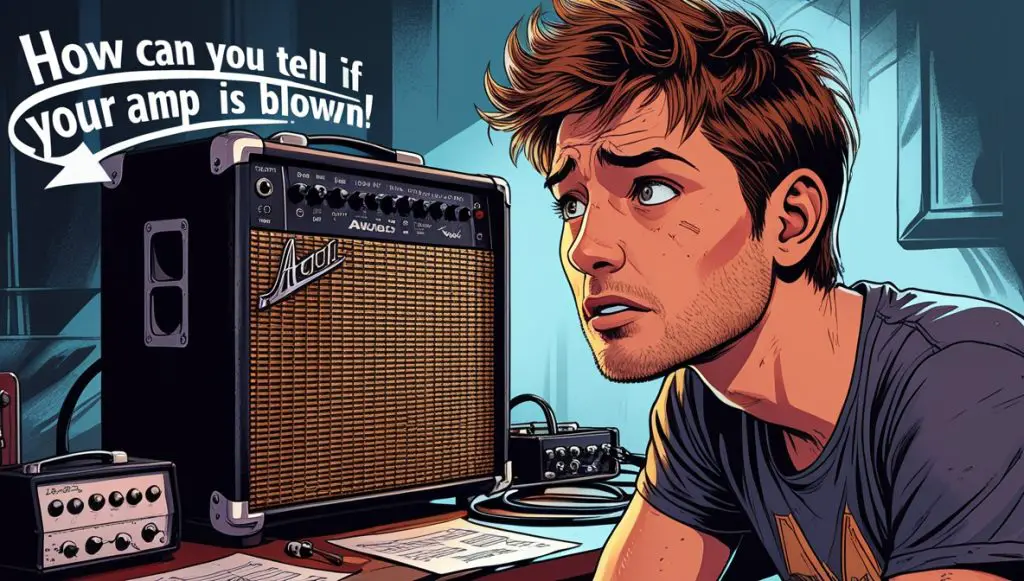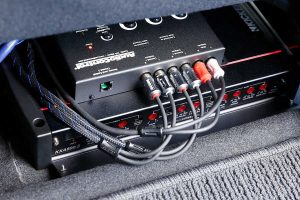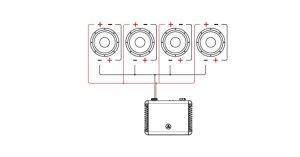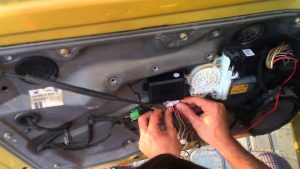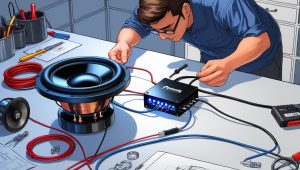A blown amplifier can be a frustrating experience, silencing your music and potentially damaging other components of your audio setup. This beginner’s guide will walk you through the key signs that indicate your amplifier might be malfunctioning, helping you identify the problem and take appropriate action. We’ll cover a range of symptoms, from the obvious to the more subtle, equipping you to diagnose the issue and decide whether professional repair is necessary. Remember, attempting internal repairs without proper knowledge can be dangerous, so always prioritize safety.
Contents
- Identifying a Blown Amplifier: Key Signs
- No Sound Output from Your Amplifier
- Distorted or Clipped Audio Signals
- Unusual Noises from the Amplifier Unit
- Overheating and Excessive Heat Emission
- Visible Damage to the Amplifier’s Parts
- Fuses Blown or Showing Signs of Damage
- Persistent Humming or Buzzing Sounds
- Amplifier Power Light is Not Illuminating
- Checking the Amplifier’s Internal Components
Identifying a Blown Amplifier: Key Signs
Several indicators point towards a potentially blown amplifier. These range from complete audio failure to subtle changes in sound quality and unusual noises emanating from the unit. By carefully observing your amplifier’s behavior, you can often pinpoint the problem before it causes further damage. Identifying these signs early can save you from more extensive and costly repairs.
Furthermore, understanding these signs is crucial for preventing further damage to your speakers or other connected equipment. A malfunctioning amplifier can send distorted or excessively powerful signals, potentially damaging your speakers’ components. Therefore, paying close attention to these indicators is essential for maintaining the health of your entire audio system.
No Sound Output from Your Amplifier
The most obvious sign of a blown amplifier is the complete absence of sound. If you’ve checked all your connections – speakers, input sources, and power – and still hear nothing, the amplifier itself may be the culprit. This complete silence, assuming all other components are functioning correctly, strongly suggests a significant problem within the amplifier’s circuitry.
However, it’s crucial to rule out other possibilities before concluding the amplifier is blown. Ensure your input source is working correctly and that the volume is turned up on both the source and the amplifier. Check all cables for proper connections and any signs of damage. If all other components are functioning normally and you still have no sound, then the amplifier is likely the source of the problem.
Distorted or Clipped Audio Signals
Distorted or clipped audio signals are another clear indication that something is wrong with your amplifier. Clipping manifests as a harsh, grating sound, often accompanied by a loss of clarity and detail in the music. This occurs when the amplifier is attempting to output a signal that exceeds its capabilities, resulting in a "clipped" or flattened waveform.
This distortion is often caused by overloading the amplifier, pushing it beyond its safe operating limits. However, internal component failure within the amplifier can also lead to similar distortion, even at lower volumes. If you notice a consistent distortion regardless of the input volume, it strongly suggests an internal problem requiring professional attention.
Unusual Noises from the Amplifier Unit
Beyond distorted audio, unusual noises emanating from the amplifier itself can signal a problem. These might include crackling, popping, hissing, or a persistent high-pitched whine. These sounds often indicate internal component failure or loose connections within the amplifier’s circuitry.
These noises are often caused by damaged components such as capacitors, resistors, or transistors. The crackling or popping might be due to arcing within the circuitry, while a persistent whine could be related to a malfunctioning power supply. If you hear any of these unusual noises, it’s best to immediately power down the amplifier and seek professional assistance.
Overheating and Excessive Heat Emission
Amplifiers generate heat during operation, but excessive heat is a significant warning sign. If your amplifier feels unusually hot to the touch, even after a short period of use, it could indicate a problem with its internal components or cooling system. This overheating can damage components and potentially lead to a complete failure.
Prolonged overheating can cause irreversible damage to sensitive internal components, such as transistors and integrated circuits. This can manifest as reduced performance, intermittent operation, or complete failure. If your amplifier is running excessively hot, immediately turn it off and allow it to cool down completely before attempting further use.
Visible Damage to the Amplifier’s Parts
Sometimes, the problem is quite apparent. Look closely at your amplifier for any visible signs of damage. This could include burnt components, broken wires, cracked casing, or any other physical damage. Obvious physical damage strongly suggests internal problems and potentially a blown amplifier.
Even minor physical damage can indicate a more serious internal issue. A small crack in the casing might seem insignificant, but it could indicate internal stress or damage from overheating. Similarly, a slightly discolored component could be a sign of overheating or even a short circuit. If you see any visible damage, it’s best to avoid further use and seek professional repair.
Fuses Blown or Showing Signs of Damage
Amplifiers often incorporate fuses as a safety mechanism to protect against power surges and short circuits. If a fuse has blown, it will typically be visibly broken or show signs of melting. Replacing a blown fuse might resolve the problem, but it’s crucial to identify the underlying cause of the fuse failure to prevent future problems.
A blown fuse indicates a potential short circuit or overload within the amplifier. Simply replacing the fuse without addressing the underlying issue can lead to repeated fuse failures and potential damage to other components. While replacing a fuse is a simple task, it’s crucial to use a fuse of the correct amperage rating.
Persistent Humming or Buzzing Sounds
A persistent humming or buzzing sound, even when no audio is playing, can indicate a problem with the amplifier’s power supply or grounding. This could be caused by faulty components within the power supply, loose connections, or a grounding issue. The hum may increase in intensity with changes in volume or input source.
This continuous humming or buzzing is often a sign of a problem with the amplifier’s internal circuitry. It could indicate a faulty component in the power supply, a loose connection, or a grounding issue. Ignoring this persistent noise can lead to more significant problems down the line.
Amplifier Power Light is Not Illuminating
If the power light on your amplifier isn’t illuminating when the unit is plugged in, it suggests a problem with the power supply or a more serious internal fault. This could be a blown fuse, a faulty power switch, or a problem with the amplifier’s main power circuitry. This lack of power indication prevents the amplifier from functioning.
Before concluding that the amplifier is entirely blown, check the power outlet and ensure the power cord is securely connected. If the problem persists, it’s highly likely that there’s an internal fault within the amplifier, and professional repair is recommended.
Checking the Amplifier’s Internal Components
Caution: This section is for experienced users only. Working with internal amplifier components can be dangerous due to high voltages and the risk of electric shock. If you are not comfortable working with electronics, seek professional assistance.
If you are experienced and comfortable working with electronics, you can carefully inspect the internal components of the amplifier for any signs of damage. This might involve removing the amplifier’s casing (after disconnecting the power supply!), and visually inspecting capacitors, resistors, transistors, and other components for signs of burning, bulging, or other damage. However, even with experience, diagnosing and repairing complex amplifier issues can be extremely challenging.
Remember that even experienced technicians use specialized tools and equipment for diagnosing and repairing amplifier problems. Incorrect repairs can lead to further damage or even create a safety hazard. Therefore, if you are unsure about any aspect of the repair process, it is always best to seek professional help.
Identifying a blown amplifier involves careful observation and a systematic approach. While some issues, like blown fuses, might be easily addressed, others require professional expertise. Prioritizing safety and understanding the potential risks associated with internal repairs is crucial. If you’re unsure about any aspect of diagnosing or repairing your amplifier, always seek the assistance of a qualified technician to avoid further damage or injury. Remember, a functioning amplifier is essential for enjoying your audio system, and proactive maintenance can prevent costly repairs in the future.
